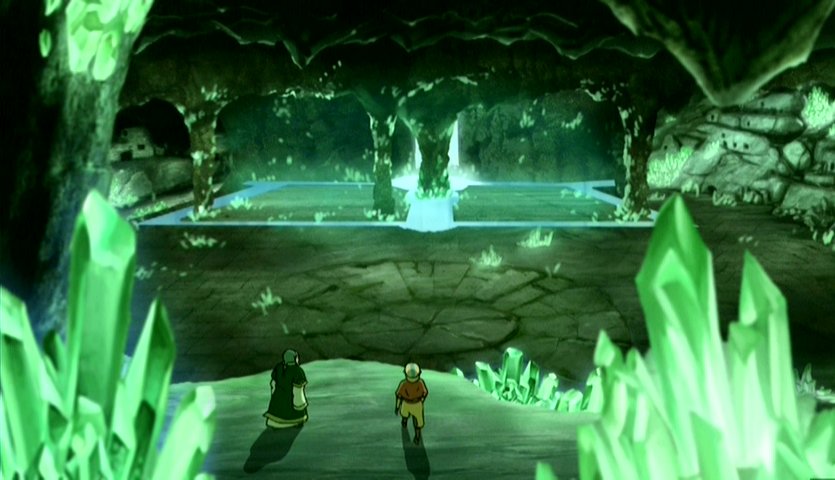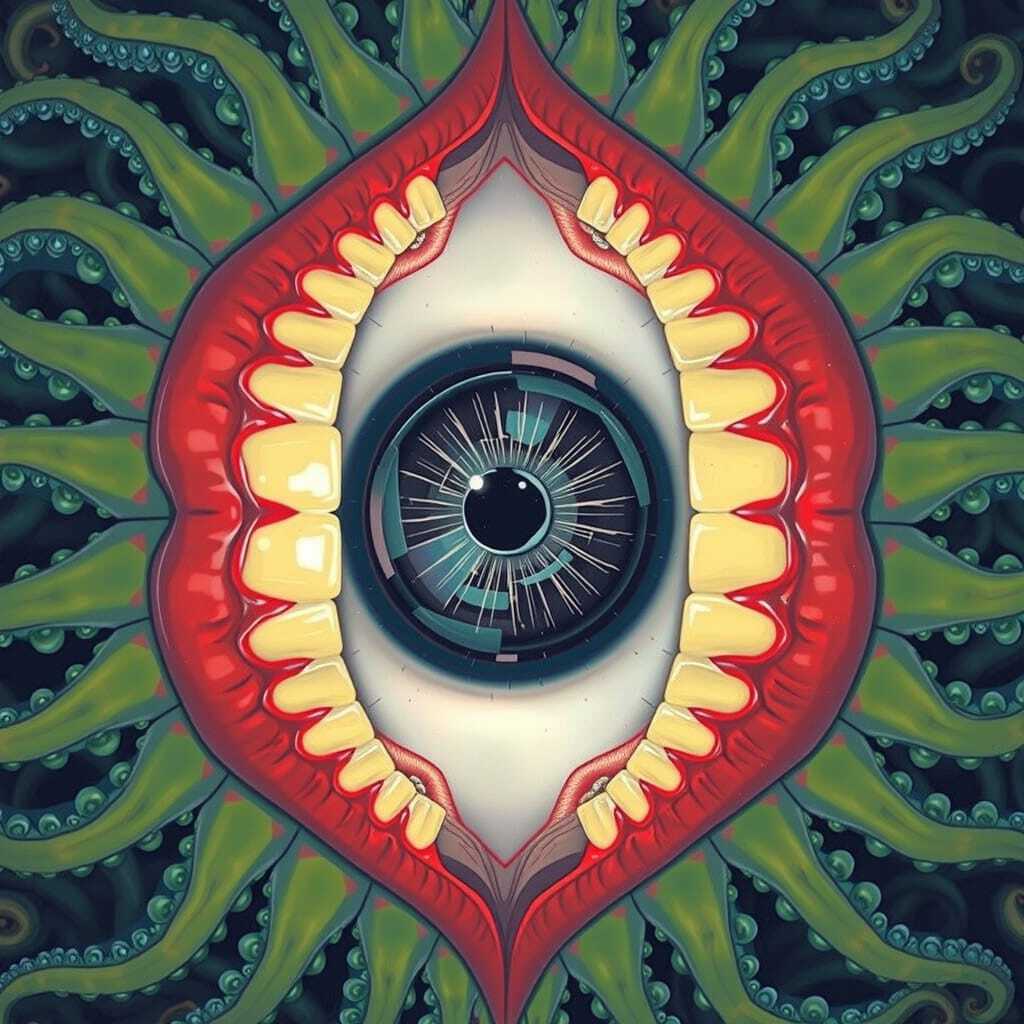I’m designing a solarpunk city for my next novel and am exploring my options for streetlights. On the one hand, light pollution harms wildlife and humans. It also uses energy. On the other, well-lit streets increase the perception of safety. This is not to say good lighting prevents crime. If anything, it facilitates it. Further, you would expect crime to be less in a solarpunk city that prioritizes mutual aid, minimizes wealth disparity, and fights toxic masculinity. However, we should not discount the feeling of danger from darkness.
Personally, I’m male presenting, actively seek out dangerous situations, and have a high tolerance for horror movies. My first inclination is that streetlights should go. That said, once I got caught out at night in the woods. I was immediately terrified. And I had my phone light with me. In short, if a city is not lit, I suspect few people would venture out at night.
1- Mostly Dark-
A city could remove all street lights. People would instead rely on personal lighting: head lamps and flashlights. This would be more efficient and less harmful. Curbs and other critical areas could be marked (not illuminated) by glow-in-the-dark paint or bioluminescent algae or plants. There would be some light from open windows.
2- Lightly Lit-
Streetlights with caps that aim light downward, wavelengths skew into the redder side of the spectrum, and the minimum illumination required to see. Amber light is less harmful. Brighter lights create more shadows. An example of a city using this minimal approach is Canberra, as light pollution would jeopardize local observatories.
3- Cinderella Lighting -
Bright streetlights switch off at a specific time, such as midnight. This would allow people to enjoy some nighttime hours, while leaving others to more natural darkness. This is the scenario I used in my previous solarpunk novels.
Do let me know your preference and awesome ideas.
Change the colour. Red light is less bright and better light pollution wise for wildlife, but still gives the same illusion of safety. Also doesn’t stimulate the circadian rythm. Also 95% of light pollution is eliminated when streetlamps are specifically down facing.
this pic should help visualise https://www.reddit.com/r/coolguides/s/abmxpwZ1jE
Came here to say this. Red light + directional lighting basically solves the problem.
And no insects!
I wonder how well white directional lighting with matte red pavements would work? You get maximum perception of safety but in theory most of the actual reflected light should be red.
but the light sources themselves would still interfere with wildlife and the circadian rhythm
What about some combination of 2 and 3 with “smart” control, like motion activated or buttons that light up a street for the next 500m or so and turn off after some time
I think that’s the way to go. A bunch of northern countries have already started working on 2 and 3 - in that more natural, more restricted lighting is available in the city. Especially during the winter, it can suck when daylight lasts only 10 hours or less.
And the dark is just dangerous, even in modern times. For better or worse some primal part of me ‘knows’ that civilization means keeping the lights on and I think most people would agree. We can just be way more responsible and less impactful to nature with it.
Love this. Also, point all the lights down. That seems trivial, but is done wrong a surprising amount of the time.
point all the lights down
This is so simple but way too many don’t do it. There is a streetlight that illuminates our room completely, even though it is 4 stories below…
Also, point all the lights down
Yes, definitely. Tucson AZ is a good example of this due to the nearby observatory.
I do not have much faith in motion sensors differentiating between animals and humans. Also, if they only turn on when your close, that might not help with perceived danger.
I’m not sure differentiation is necessary. Critter goes by, light comes on, nothing else moves, light goes off. Happens all the time with the (obnoxiously bright) motion lights my neighbors have.
So far as the sensor goes, have them networked. Activating one lights up the next light in either direction, and across the street. Then rolls with the movement. Part of my brain is thinking that bad actors would find a way to abuse this, though.
Fair point, but I think there are technical solutions for differentiation
Another more crazy idea could be to use a remote (e.g. a smartphone) which communicates with lights to automatically have illuminaiton around you from public lights. People could even set their own brightness
That’s an interesting idea - instead of carrying a flashlight you might carry an RFID transponder. They’d need to not be linked to any personal records (such as purchase) to protect anonymity and prevent tracking. And a personal flashlight might still be useful.
I’m not sure I love the idea of lights flicking on, identifying where I am to someone waiting in the dark. Maybe it would turn on lights for a block length on the street or something? I’m also wondering if the reduced on-off cycling would wear out lights faster and, if so, how replacing them more often stacks up to more energy spent running them all the time.
Still it’s an interesting compromise position on the light pollution situation.
You could have some device issued to citizens activates lights when in range to get around that (good luck, tourists! Though I suppose loaners would exist).
Dark Sky is a group working to protect the visibility of the night sky. https://darksky.org/what-we-do/advancing-responsible-outdoor-lighting/
They’ve got suggestions on both limiting use of lighting and using lights that don’t point upward, automatically dim, and don’t generate a lot of glare
Thanks! Feels like they recommend something closest to option two. https://darksky.org/resources/guides-and-how-tos/lighting-principles/
You’re welcome, and good luck with your project
I just want to say, as a light pollution researcher, it warms my heart to see people start to get it.
You’re on the right track and got plenty of good suggestions already. I’ll add that the way to improve the feeling of safety is to light the faces of people, so you need lights at least taller than humans if you want them pointing downwards. Uniformity of lighting is also a big part, so multiple small lamps tend to be better than one big one.
In short, keep it dim, amber/red, uniform, localized, downward pointing (with dark roads if possible) and turn it off when not needed (most town in France shit off the lights in the evening and no one complained).
Also, keeping the streets narrow, winding and having buildings close (aka European streets) will confine the light in the city better than the opposite.
Feel free to ask me anything and good luck!
Genetic engineering that let’s people see in the dark.
So, I feel like 2, maybe with 3 in certain high-traffic areas, would be a good idea, for a couple reasons:
- increased visibility for vehicles, particularly in places with a lot of pedestrians, who might not all have their own lights or be too inebriated to use them.
- nighttime socializing outdoors, such as markets, streets with lots of nightlife, plazas, etc. Sure, small personal lights could become incorporated into fashion, but those also need to be powered, and would have to illuminate faces without blinding anyone. Public lighting just seems easier.
- less isolating for night shift workers (if that’s a thing in the world you’re writing).
Could even have 2 shut off in quieter neighborhoods that have no open businesses during the wee hours.
No shame in taking inspiration from the greatest, most excitingist, and amazingist show on earth.
I reckon Cabbages would be a great business idea in a Solarpunk kinda world… just sayin.


If you’re building a world it’s #1. If you’re telling a story then it’s #2 with presence activation. If you’re Asimov then all of these are wrong.
deleted by creator
You could simply look up bioluminescent organisms and think of a novel way to us this to light areas, or use non-LED red lights which do not affect most fauna and flora at night.
As much as I love bioluminescence, it is too dim to do more than mark paths.
I take it LED’s have trouble producing a single wavelength?
Due to the energy crisis in Europe at the beginning of the Russian invasion of Ukraine, as a cost saving measure some cities here in Belgium decided to turn off the street lights at a certain time. I think they went dark at 23:00 or 22:00, so your Cinderella Lighting scenario.
I thought it felt quite peaceful to have some true darkness, and wouldn’t mind it back, but at the same time if you had to walk outside at that time, it could feel a bit unsettling even if I live in a very safe neighborhood. I also found that there were some practical issues like, not being able to see obstacles or the state of the pavement, so you had to tread carefully. I’d definitely buy a decent flashlight if they implement that again.
Later, I suppose after complaints from citizens, they reverted to turning only every other streetlight off. I didn’t like that at all, it was the worst of both worlds. There were still patches where you couldn’t see properly, but none of the peaceful feeling of true darkness. Since a year or so it’s back to all streetlights all night.
I’m not sure how fantastical your world is but maybe nightglasses rather than sunglasses. simulates natural night vision, could have some interesting side effects if used a lot.
That’s interesting, even going with modern tech, it’s a neat answer to preserving darkness. Military-grade passive night vision with the analogue tubes are ridiculously expensive but you wouldn’t need them just for walking around - simple infrared spotlight goggles are way cheaper, and probably lighter, especially if you remove extra binocular features. They could also be assisted by infrared streetlights if those wouldn’t mess up other animals. Downsides: I don’t think walking while wearing them would be fun, your depth perception and field of view takes a hit with most designs, and slow update of the screen can be disorienting. They’re also more complicated to make than flashlights.
What about some tree- or bush-like structures that have lots of small lights, one under each leaf? Having many lights that could all be positioned and angled differently would let you direct the light to only where it’s needed and create a smooth shaddow-free glow. And be pretty too! Like the Cave of Two Lovers @Gorgritch_umie_killa@aussie.zone posted. Individual lights could have different color and brightness too.
Depending on the kind of bio-engineering or fantastical biology in your world these could be completely organic, completely manufactured, or some combination like lights attached to trees/vines grown for the purpose.









